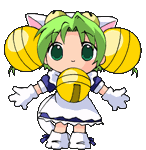Historians and writers on manga history have described two broad and complementary processes shaping modern manga. Their views differ in the relative importance they attribute to the role of cultural and historical events following World War II versus the role of pre-War, Meiji, and pre-Meiji Japanese culture and art. One view emphasizes events occurring during and after the U.S. Occupation of Japan (1945–1952), and stresses that manga strongly reflect U.S. cultural influences, including U.S. comics(brought to Japan by the GIs) and images and themes from U.S.television, film, and cartoons (especially Disney). Alternately, other writers such as Frederik L. Schodt, Kinko Ito, and Adam L. Kern stress continuity of Japanese cultural and aesthetic traditions as central to the history of manga. Modern manga originated in the Occupation (1945–1952) and post- Occupation years (1952–early 1960s), while a previously militaristic andultra-nationalist Japan rebuilt its political and economic infrastructure.
An explosion of artistic creativity occurred in this period, involving manga artists such as Osamu Tezuka (Astro Boy) and Machiko Hasegawa (Sazae-san). Astro Boy quickly became (and remains) immensely popular in Japan and elsewhere, and the anime adaptation of Sazae-san continues to run as of 2009, regularly drawing more viewers than any other anime on Japanese television. Tezuka and Hasegawa both made stylistic innovations. In Tezuka's "cinematographic" technique, the panels are like a motion picture that reveals details of action bordering on slow motion as well as rapid zooms from distance to close-up shots. This kind of visual dynamism was widely adopted by later manga artists. Hasegawa's focus on daily life and on women's experience also came to characterize later shōjo manga.
Between 1950 and 1969, an increasingly large readership for manga emerged in Japan with the solidification of its two main marketing genres, shōnen manga aimed at boys and shōjo manga aimed at girls. In 1969 a group of female manga artists (later called the Year 24 Group, also known as Magnificent 24s) madetheir shōjo manga debut ("year 24" comes from the Japanese name for the year 1949, the birth-year of many of these artists). The group included Hagio Moto, Riyoko Ikeda, Yumiko Oshima, Keiko Takemiya , and Ryoko Yamagishi, and they marked the first major entry of female artists into manga. Thereafter, primarily female manga artists would draw shōjo for a readership of girls and young women. In the following decades (1975–present), shōjo manga continued to develop stylistically while simultaneously evolving different but overlapping subgenres. Major subgenres include romance, superheroines, and "Ladies Comics" (in Japanese, redisu レディース, redikomi レディコミ, and josei 女性). Modern shōjo manga romance features love as a major theme set into emotionally intense narratives of self- realization.With the superheroines, shōjo manga saw releases such as Pink Hanamori's Mermaid Melody Pichi Pichi Pitch Reiko Yoshida's Tokyo Mew Mew, And, Naoko Takeuchi's Pretty Soldier Sailor Moon, which became internationally popular in both manga and anime formats.[28] Groups (or sentais) of girls working together have also been popular within this genre. Like Lucia, Hanon, and Rina singing together, and Sailor Moon, Sailor Mercury, Sailor Mars, Sailor Jupiter, and Sailor Venus working together.Manga for male readers sub-dividesaccording to the age of its intended readership: boys up to 18 years old (shōnen manga) and young men 18- to 30-years old (seinen manga); as well as by content, including action-adventure often involving male heroes, slapstick humor, themes of honor, and sometimes explicit sexuality.The Japanese use different kanji for two closely allied meanings of "seinen"—青年 for "youth, young man" and 成年 for "adult, majority"—the second referring to sexually overt manga aimed at grown men and also called seijin ("adult" 成人) manga. Shōnen, seinen, and seijin manga share many features in common. Boys and young men became some of the earliest readers of manga afterWorld War II. From the 1950s on,shōnen manga focused on topics thought to interest the archetypal boy,including subjects like robots, space-travel, and heroic action- adventure. Popular themes include science fiction, technology, sports, and supernatural settings.
Manga with solitary costumed superheroes like Superman, Batman, and Spider-Man generally did not become as popular.The role of girls and women in manga produced for male readers hasevolved considerably over time to include those featuring single pretty girls (bishōjo)[ such as Belldandy from Oh My Goddess!, stories where such girls and women surround the hero, as in Negima and Hanaukyo Maid Team, or groups of heavily armed female warriors (sentō bishōjo)
With the relaxation of censorship in Japan in the 1990s, a wide variety of explicit sexual themes appeared in manga intended for male readers, and correspondingly occur in English translations. However in 2010 theTokyo Metropolitan Government passed a bill to restrict harmful content. The gekiga style of drawing— emotionally dark, often starkly realistic, sometimes very violent— focuses on the day-in, day-out grim realities of life, often drawn in gritty and unpretty fashions. Gekiga such as Sampei Shirato's 1959–1962 Chronicles of a Ninja's Military Accomplishments (Ninja Bugeichō) arose in the late 1950s and 1960s partly from left-wing student and working-class political activism and partly from the aesthetic dissatisfaction of young manga artists like Yoshihiro Tatsumi with existing manga.
skip to main |
skip to sidebar
Translator
About Me
Sankaku Complex
Popular Posts
-
So ive been away for a while and didnt have chance to post for a while and our fan page of facebook has finally reached over 11000 people, b...
-
Last week, The Pokémon Company released Pokémon X and Pokémon Y for the Nintendo 3DS. In Japan, the pair of games collectively sold 1...


